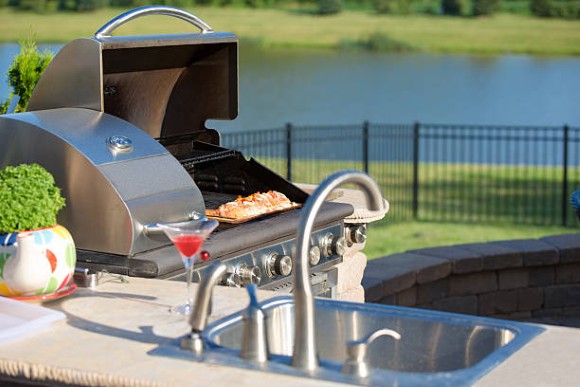
If you're thinking of installing an outdoor kitchen, you're going to need a kitchen faucet. But which one to choose? In this post, we'll outline the different factors you need to consider when selecting a kitchen faucet, and provide you with a few tips to help you choose the right one.
So whether you're looking for a budget-friendly option or something that will stand the test of time, read on to find the perfect outdoor kitchen faucet for your needs.
Tips for Choosing an Outdoor Kitchen Faucet
Choosing a kitchen faucet requires careful consideration of the following factors:
What is Your Budget?
Budget is the first and most important factor to take into account when choosing a kitchen faucet. Not all outdoor kitchen faucets are created equal, and some will be more expensive than others. So before making any decisions, make sure to estimate how much money you're willing to spend on a new kitchen faucet.
What Features Do You Need?
The features of a kitchen faucet vary depending on what you're looking for. For example, some outdoor kitchen faucets come with rain guards to keep your deck or patio clean and dry during heavy rainfall, while others may have built-in water filters to reduce chlorine and other contaminants. So before making a purchase, be sure to read the details of each option carefully so that you can choose the perfect one for your needs.
Decide On Your Cooking Needs
The type of cooking you will be performing is also an important consideration when selecting a kitchen faucet. If you have plans to cook outdoors often, for example, you may want to invest in an outdoor kitchen faucet that can withstand high temperatures and heavy use. Alternatively, if your primary concern is hygiene rather than performance, some budget-friendly options available on the market come with built-in water filters and chlorination inhibitors.
Design of your outdoor kitchen
In order to select the right kitchen faucet for your outdoor kitchen, you should also take into consideration the design of the outdoor kitchen when making your selection. If you prefer an elegant and contemporary look, or if you prefer a more traditional look, you have plenty of options to choose from.
Some stylish options available on the market come with a sleek chrome construction, while others opt for classic brass finishes. So before making any decisions, take time to assess your own personal preferences and find the perfect outdoor kitchen faucet for your needs.
Know Your Space
The size and placement of the kitchen faucet should also be taken into consideration. Make sure to measure the space where you plan on placing your new faucet in order to ensure that it will fit properly. Be sure to take into consideration the height of your existing fixtures, as some taller options may not be compatible with lower-pitched spouts.
Functionality & Durability
When selecting a kitchen faucet, it is also important to consider its functionality and durability. Some of the more affordable options available on the market are designed for quick and easy installation, while others come with more features and robust construction. And of course, all kitchen faucets need to be able to withstand frequent use in order to give you years of service.
Conclusion
Choosing the right kitchen faucet can make your outdoor kitchen feel like a high-end establishment. However, it's not just about aesthetics and luxury. You also need to ensure that your faucet has all the key features such as durability and safe operation before making a purchase.

